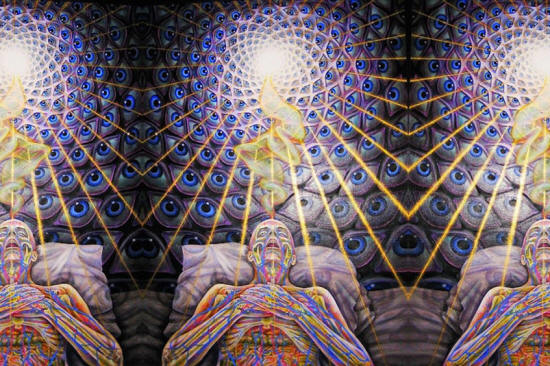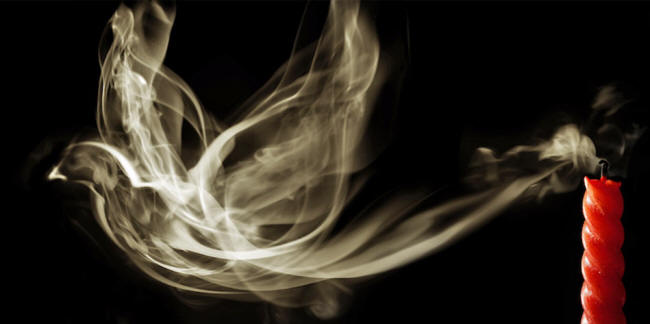|
by the breaths you take, but by its breathtaking moments." Michael Vance
Our soul remembers our
ancient past, engages with our current environment, and knows our
future lives. We live forever and
our soul is immortal.
Emotionally and
spiritually, one of our most dramatic transitions involves
the leaving of this physical vessel
that we currently occupy and the passing to the next realm of our
eternal existence.
But the lessons of shamanism can provide a perspective that differs significantly from the traditional Western view of death and dying, which is characterized by the finality of an "ending."
The key to unlocking the mysteries of existence lies in the understanding of the continuity of life and the eternal nature of the soul.
Mystery - that wonderful realm of what we sense is there, strive to know, and replicate in our creativity - is the defining nature of spirituality and certainly the essence of our transitional experiences.
As Carl Sagan noted,
Shamanism offers a way to
know the soul as an eternal shape shifter, endlessly
regenerating into limitless forms - some human, some not.
Time is not just a linear condition of loss and gain but a summative experience that unifies all time into a singular moment of,
The transition that the limited vision calls death, the shaman sees as one more of an infinite number of transitions in the soul's experience.
The lesson to be learned is,
In this way, we focus on
the positive energies of the wonderment and beauty of existence and
the promises of life.
There are actually four things that I feel are important to bring this understanding into full view.
In this article, I'm
going to concentrate on the first one and I will write in the future
about the other three practices.
What you may not have considered is that this altering of reality through our change in attitude and energy extends into the afterlife. In other words, we create our continuing reality after our soul leaves the body.
This is done through our
belief system. Just as our belief system determines our current
reality, it will also determine the direction and nature of our
future existence.
In other words, it just doesn't know what to do...
That is why in classes we
take journeys to experience what our own soul will do. These
journeys allow a person to look at what is in current motion or the
probability of what is going to happen and then make adjustments, if
they don't like what they see.
In indigenous cultures there are very distinct belief systems that the entire tribe believes in and adheres to. This not only gives the soul a template to follow but there is a collective power in that the entire tribe believes the same thing.
This collective belief is
like rocket fuel to the soul of the transitioning person.
These are just three examples out of hundreds of practices that help the soul transition safely to the other side.
The important aspect of these examples is that there is a common focus and a shared belief system that concentrates the power of the many in creating a transitional passage for the eternal soul.
In our Western culture,
one rarely finds this compelling power generated from a collective
belief and that makes it more essential that, if one's belief system
accepts the existence of an immortal soul in a unified universe, we
must make an effort to understand the nature of the transition from
this life and bring our energies to the process to help the one
transitioning and to allow ourselves to appreciate that our loved
ones are forever with us in a perfect universe.
This is a very personal experience for each person. In my own family, we have discussed this as a group, not to argue about who's right but to have an honoring of each individual's belief system.
I have actually written down our responses so if it ever happens that one of us transitions all of us left behind can envision that soul taking that path to its next phase.
We will be the rocket
fuel for the movement from one dimension to the next.
Bringing the energy of a
positive force regarding the eternal nature of the soul can create
an appreciation of our existence and the significance of our unity
with the cosmos.
This does not discount the significance of this moment in existence, for the celebration of a life well-lived demonstrates the significance of every individual in the oneness of existence and places us in the context of the universal truth that time is endless, that life is a condition of continuity, and that we are all connected in a single array of associations.
Every birth, every event
of life, and every death is linked endlessly in the universe's grand
design and each is but one more transition that we all share and
will always be a part of.
My father had been ill with cancer for some time and I had created a Transition Blanket in preparation for his imminent death.
He seemed to struggle in his passing and his expression appeared pained and conflicted. When my father died, he died with an expression of horror frozen on his face. My stepmother instantly succumbed to a wrenching fear that something awful had just happened to her beloved husband on the other side and that he was now 'trapped' in a terrible place, for 'eternity'...
She was inconsolably distraught. In my own heart, I knew how much my father had always dreaded death and his ultimate passage into unknown realms.
Once this inevitable moment was upon him, it was impossible for Dad to conceal his terror any longer. I felt certain what we'd seen on my father's face was simply a lifetime of fear at last releasing itself; though realizing this brought little solace.
In my journeywork and prayers, I had imbued the blanket with love, peace, and helping spirits for his transition. When it was placed over my father, I continued my meditations of a peaceful transition for him.
When the blanket was
removed, his countenance was one of serenity and calm - the blanket
had done its work. We do have the ability to influence the soul in
its transition to its next reality.
She enjoyed the presence of what she called "my whole crew."
There was laughter and conversation about fond memories in the hours preceding her demise and the shared happiness filled the room with love.
Her passing was serene and peaceful. I felt the loss of her physical presence strongly, of course, but I knew that she traveled to another place in the spirit of affection and loving relationship and that her continuing journey was perfect.
My mother and I had also
done pre-transition journeys and discovered that her "true love" was
waiting for her on the other side. He had not incarnated in this
lifetime experience so their reconnection was greatly anticipated.
His humorous comment defines that egocentric need that human's have to be self-perpetuating.
Mortality has always been the central dilemma of existence and religions have all focused on the question and offered many scenarios as to how we perpetuate ourselves, whether in a heavenly paradise in the afterlife or a reincarnation into other beings or a ghostly existence in perpetual suspension.
Other than our seeing the
universe as fragmented and ourselves as separate entities in
existence, we hold no greater illusion than that our life is but a
brief moment in time and then is no more.
We exist because the cosmos wills it and we should not be so inclined to deny its perfection.
As one with the universe, we should also accept our own perfection and recognize the immortality of our perfect souls.
|




